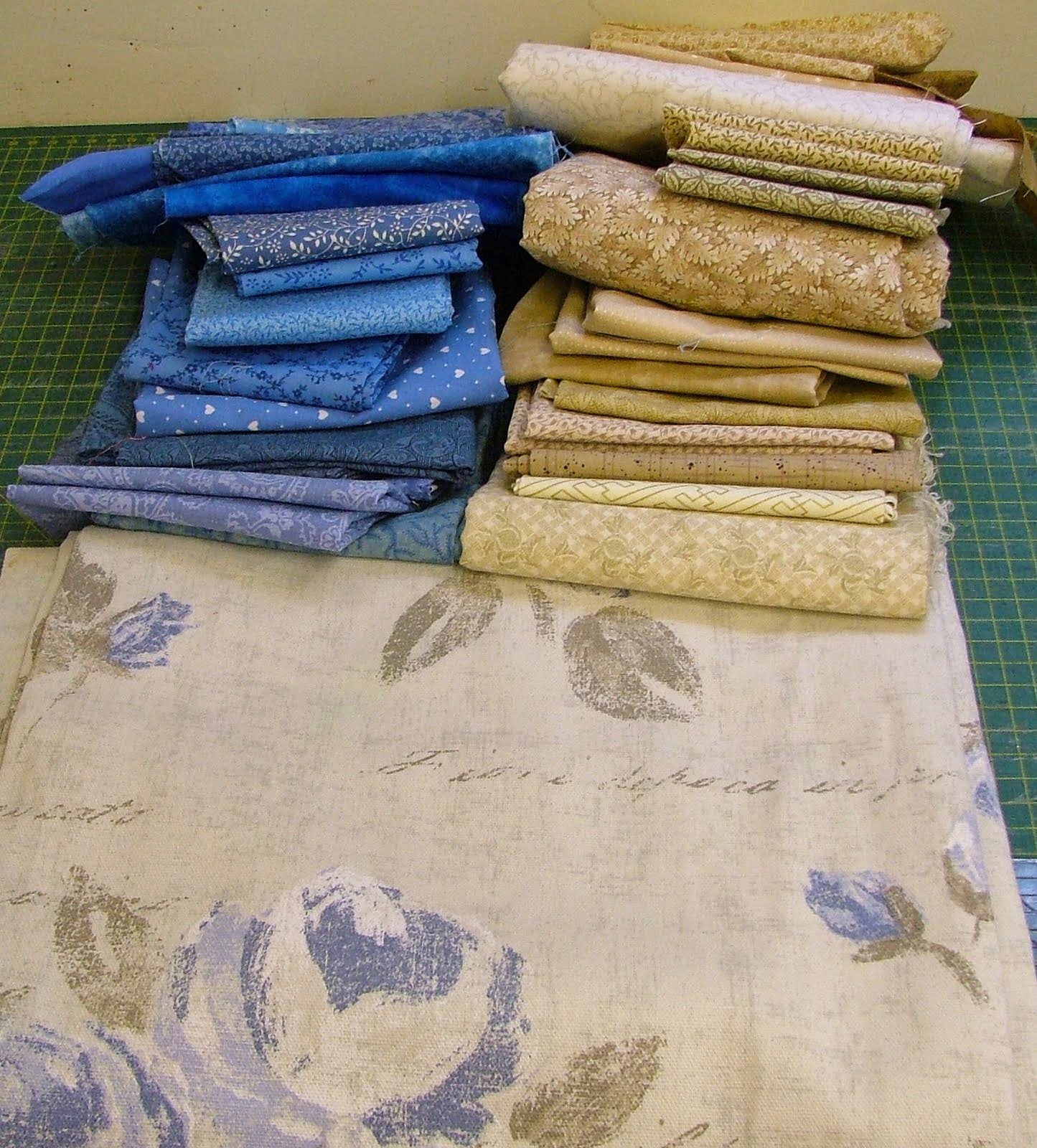I am using 2 colour ways, blues and beiges, and I want to
use up fabrics from my stash. Unfortunately many are not the size I require so predictably
I have had to buy in more fat quarters (Oh dear what a chore!!) I cut out as
much as possible from each pair of fat quarters so nothing is wasted but then I
swap the colours around to give maximum variety.
METHOD
For 2 identical blocks, place one beige fabric RS together
onto one blue fabric and cut the following:
1 square at 7” and 2
squares at 6 ¼”
On the 7” square, mark
one diagonal line. On the 6 ¼” squares mark
both diagonal lines.
Use a neutral thread to sew an
accurate ¼” seam on both sides of all
the diagonals. Press along the sewn lines afterwards to settle the stitches
and the fabric.
Use a rotary cutter and ruler to cut along the marked diagonal line on the 7” square.
On the 6 ¼” squares,
cut along both of the marked diagonal lines. Then cut vertically and horizontally (not marked) across the middle of the
square (3 1/8” from the straight edge of the 6 ¼” square).
TIP: If you have a good
blade on your rotary cutter, you can do all these cuts without shifting the
fabric, making it a much quicker process!
The 7” squares will produce 2 large squares made up of a
blue and a beige triangle.
The 6 ¼” squares will produce 16 small squares.
Place them in a pile on the ironing board with the dark
(blue) square uppermost. Press the seam
towards the dark (blue) fabric.
On the cutting board, use a square ruler to trim away the excess fabric from around
the edges. Reduce the large square to 6 ½”. Reduce the small squares to 2
½”. (Note: 2 small squares will be
surplus to requirements.)
Sew 3 small squares together to create a short line and sew 4 small squares together to create a longer line.
Sew the short line
to the edge of the large square first and then sew the longer line along the top to complete the block. Make sure
that the tips of the triangles are pointed.
Press the seams lightly
at this stage towards to middle of the block as seen below (the seams can be repositioned
if necessary when the final top is constructed).
Beyond the joy of learning how to construct an unfamiliar
block, the other part of making a quilt is sheer slog! I work several blocks at
a time so I am either cutting a lot or marking or pressing or constructing or
pinning on the design wall. The work soon gets done.
Here is a re-cap of the important steps.
1 Mark, sew and slice
And before you know it you are well on your way to making a
quilt.
We fly to the Yellowstone National Park on Sunday/Monday so
there won’t be a Blog next week. Whilst I am there, I will be looking out for
more fabric for blocks, borders and backing. It should be far cheaper over
there!!!!






























































